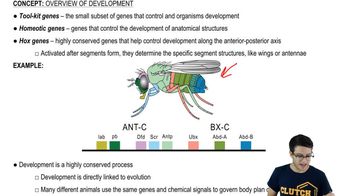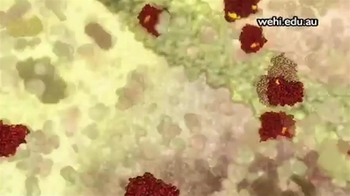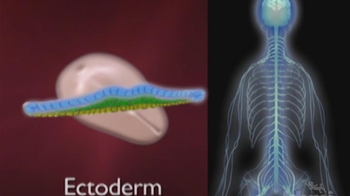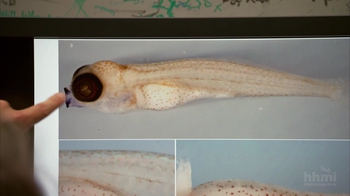Table of contents
- 1. Introduction to Biology2h 42m
- 2. Chemistry3h 40m
- 3. Water1h 26m
- 4. Biomolecules2h 23m
- 5. Cell Components2h 26m
- 6. The Membrane2h 31m
- 7. Energy and Metabolism2h 0m
- 8. Respiration2h 40m
- 9. Photosynthesis2h 49m
- 10. Cell Signaling59m
- 11. Cell Division2h 47m
- 12. Meiosis2h 0m
- 13. Mendelian Genetics4h 44m
- Introduction to Mendel's Experiments7m
- Genotype vs. Phenotype17m
- Punnett Squares13m
- Mendel's Experiments26m
- Mendel's Laws18m
- Monohybrid Crosses19m
- Test Crosses14m
- Dihybrid Crosses20m
- Punnett Square Probability26m
- Incomplete Dominance vs. Codominance20m
- Epistasis7m
- Non-Mendelian Genetics12m
- Pedigrees6m
- Autosomal Inheritance21m
- Sex-Linked Inheritance43m
- X-Inactivation9m
- 14. DNA Synthesis2h 27m
- 15. Gene Expression3h 20m
- 16. Regulation of Expression3h 31m
- Introduction to Regulation of Gene Expression13m
- Prokaryotic Gene Regulation via Operons27m
- The Lac Operon21m
- Glucose's Impact on Lac Operon25m
- The Trp Operon20m
- Review of the Lac Operon & Trp Operon11m
- Introduction to Eukaryotic Gene Regulation9m
- Eukaryotic Chromatin Modifications16m
- Eukaryotic Transcriptional Control22m
- Eukaryotic Post-Transcriptional Regulation28m
- Eukaryotic Post-Translational Regulation13m
- 17. Viruses37m
- 18. Biotechnology2h 58m
- 19. Genomics17m
- 20. Development1h 5m
- 21. Evolution3h 1m
- 22. Evolution of Populations3h 52m
- 23. Speciation1h 37m
- 24. History of Life on Earth2h 6m
- 25. Phylogeny2h 31m
- 26. Prokaryotes4h 59m
- 27. Protists1h 12m
- 28. Plants1h 22m
- 29. Fungi36m
- 30. Overview of Animals34m
- 31. Invertebrates1h 2m
- 32. Vertebrates50m
- 33. Plant Anatomy1h 3m
- 34. Vascular Plant Transport1h 2m
- 35. Soil37m
- 36. Plant Reproduction47m
- 37. Plant Sensation and Response1h 9m
- 38. Animal Form and Function1h 19m
- 39. Digestive System1h 10m
- 40. Circulatory System1h 57m
- 41. Immune System1h 12m
- 42. Osmoregulation and Excretion50m
- 43. Endocrine System1h 4m
- 44. Animal Reproduction1h 2m
- 45. Nervous System1h 55m
- 46. Sensory Systems46m
- 47. Muscle Systems23m
- 48. Ecology3h 11m
- Introduction to Ecology20m
- Biogeography14m
- Earth's Climate Patterns50m
- Introduction to Terrestrial Biomes10m
- Terrestrial Biomes: Near Equator13m
- Terrestrial Biomes: Temperate Regions10m
- Terrestrial Biomes: Northern Regions15m
- Introduction to Aquatic Biomes27m
- Freshwater Aquatic Biomes14m
- Marine Aquatic Biomes13m
- 49. Animal Behavior28m
- 50. Population Ecology3h 41m
- Introduction to Population Ecology28m
- Population Sampling Methods23m
- Life History12m
- Population Demography17m
- Factors Limiting Population Growth14m
- Introduction to Population Growth Models22m
- Linear Population Growth6m
- Exponential Population Growth29m
- Logistic Population Growth32m
- r/K Selection10m
- The Human Population22m
- 51. Community Ecology2h 46m
- Introduction to Community Ecology2m
- Introduction to Community Interactions9m
- Community Interactions: Competition (-/-)38m
- Community Interactions: Exploitation (+/-)23m
- Community Interactions: Mutualism (+/+) & Commensalism (+/0)9m
- Community Structure35m
- Community Dynamics26m
- Geographic Impact on Communities21m
- 52. Ecosystems2h 36m
- 53. Conservation Biology24m
20. Development
Developmental Biology
Problem 6`
Textbook Question
The following predictions ask you to consider how genetic regulatory cascades provide positional information. Select True or False for each statement.
T/F Mutation of a gene at one level of a regulatory cascade will affect the expression of genes at all levels of the cascade.
T/F Mutation of a gene that is expressed later in a regulatory cascade will affect a smaller region of the body than mutation of gene that is expressed early in the cascade.
T/F In the regulatory cascade used by Drosophila, a gene at one level of the cascade will be controlled only by genes at the level immediately above it.
T/F Genes that control the largest regions of the Drosophila embryo are not transcribed in the embryo.
 Verified step by step guidance
Verified step by step guidance1
Understand the concept of genetic regulatory cascades: These are sequences of gene activations where one gene's expression influences the expression of subsequent genes. This cascade provides positional information during development.
Consider the first statement: A mutation in a gene at one level of a regulatory cascade can affect the expression of genes at all levels below it, as the cascade relies on sequential activation. Reflect on how upstream mutations can have downstream effects.
Analyze the second statement: A gene expressed later in the cascade typically affects a smaller region because earlier genes set up broad positional information, while later genes refine and specify details. Consider the hierarchical nature of gene expression in development.
Evaluate the third statement: In Drosophila, regulatory cascades often involve multiple levels of control, where genes can be influenced by factors beyond the immediately preceding level. Think about the complexity of gene interactions and regulatory networks.
Examine the fourth statement: Genes controlling large regions of the Drosophila embryo, such as maternal effect genes, are often transcribed in the mother and not in the embryo itself. Consider the role of maternal contributions in early development.
 Verified video answer for a similar problem:
Verified video answer for a similar problem:This video solution was recommended by our tutors as helpful for the problem above
Video duration:
2mPlay a video:
Was this helpful?
Key Concepts
Here are the essential concepts you must grasp in order to answer the question correctly.
Genetic Regulatory Cascades
Genetic regulatory cascades are sequences of gene activations where one gene's expression influences the expression of subsequent genes. These cascades are crucial for developmental processes, providing positional information that guides the spatial and temporal expression of genes, ultimately shaping the organism's structure and function.
Recommended video:
Guided course

Phosphorylation Cascades
Positional Information
Positional information refers to the spatial cues within an organism that guide cells to develop into specific structures. In genetic regulatory cascades, genes provide positional information by activating or repressing other genes, ensuring that cells differentiate appropriately based on their location within the developing embryo.
Recommended video:
Guided course

Positive Feedback
Gene Expression Hierarchy
Gene expression hierarchy in regulatory cascades involves genes being activated in a specific order, where early-expressed genes often control larger developmental regions than those expressed later. Mutations in early genes can have widespread effects, while mutations in later genes typically affect more localized areas, reflecting their position in the cascade.
Recommended video:
Guided course

Introduction to Regulation of Gene Expression

 5:28m
5:28mWatch next
Master Cell Division and Differentiation with a bite sized video explanation from Jason
Start learningRelated Videos
Related Practice




























![Drosophila Embryogenesis - Anterior/Posterior Patterning [English Captions]](https://img.youtube.com/vi/ZOzKXrOGtgw/mqdefault.jpg)



















